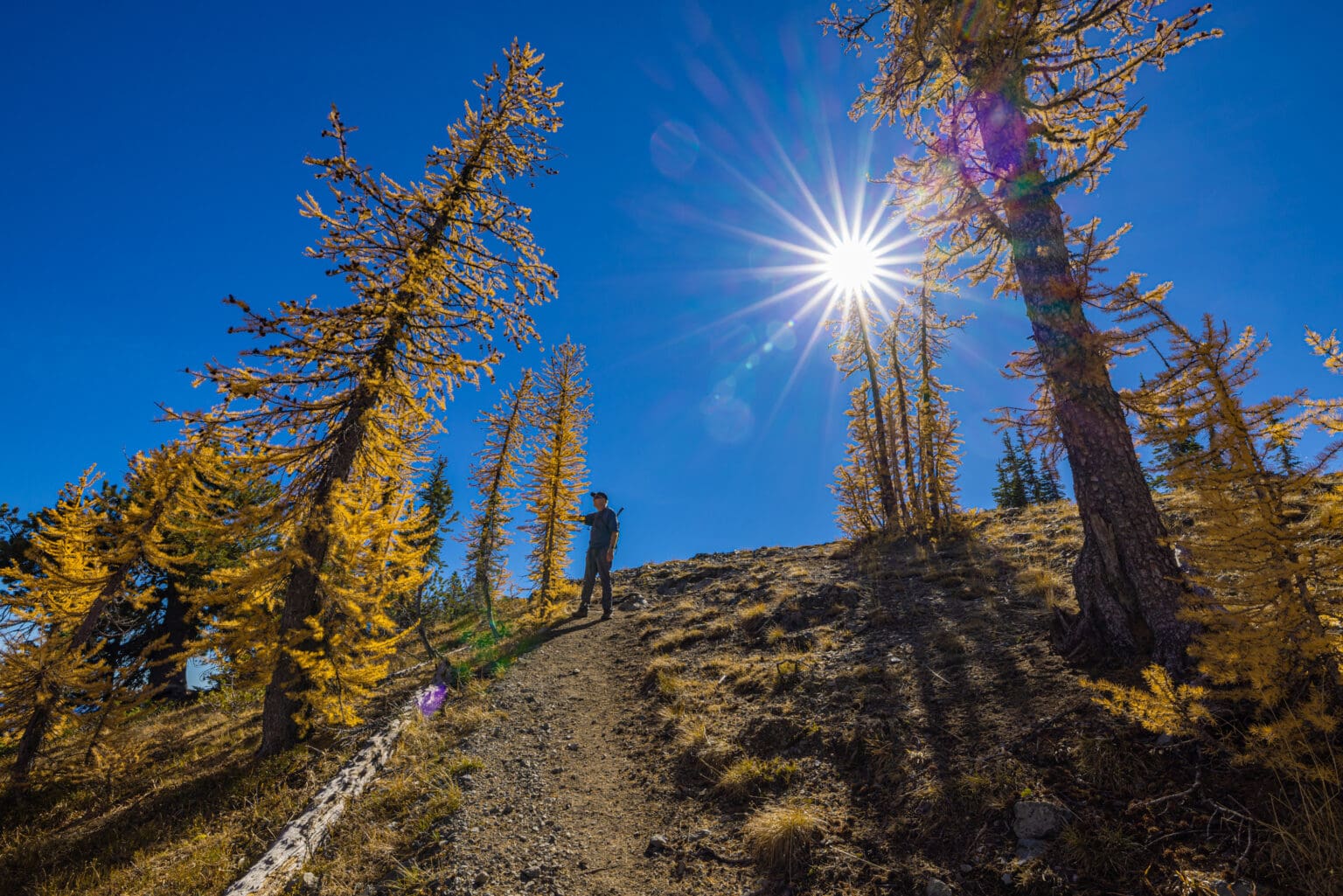MAZAMA, Okanogan County — The most important word in outdoor adventuring is “yes.”
I texted those three little letters after Bellingham photographer Ken Harrison invited me to join him on a spontaneous excursion to the Goat Peak Lookout.
Where was the mountain? How difficult would the climb be?
Didn’t know, didn’t care. The forecast called for an October day drenched in golden rays. I was all in.
We took off early on a long drive across state Route 20 with images of golden larches swirling in our heads.
Ken, founder and leader of the Boomers Hiking Club, is on a mission to visit all of Washington’s 44 historic fire lookouts accessible by trail. He had Goat Peak squarely in his sights.
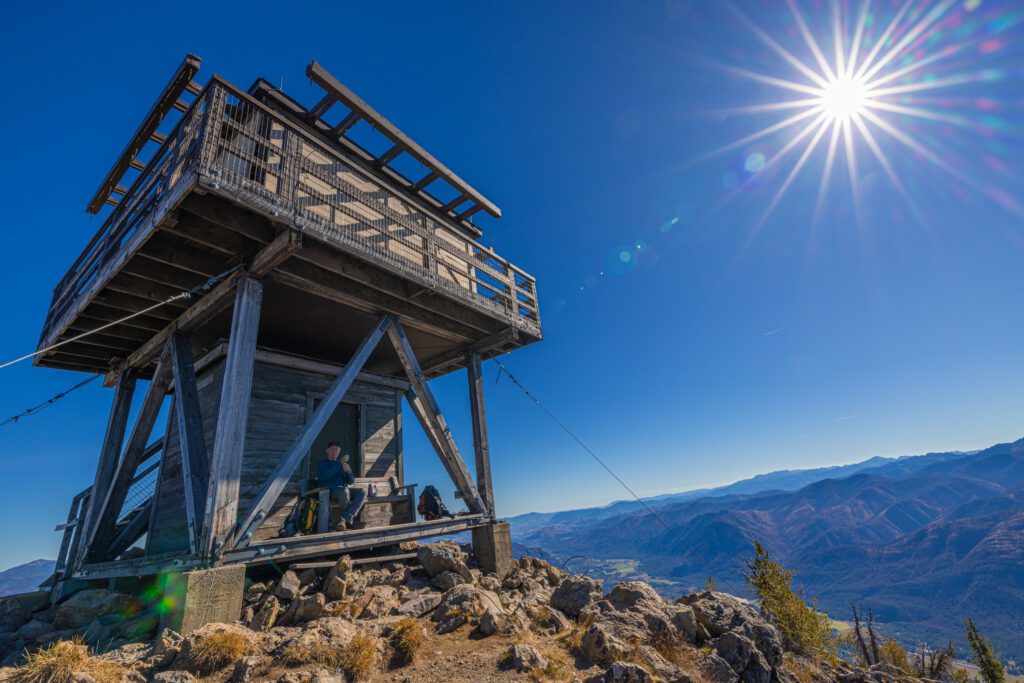
While still used occasionally by Methow Valley fire spotters, the destination has become a popular local hike to view larches, a deciduous pine whose shimmering needles are all the rage this time of year.
The trees are as much a part of Washington’s autumn decor as the Bellewood Farms pumpkin patch. It has become a fall ritual for people to drive to the eastern slopes of the Cascades to catch the vibrant colors during a brief window from late September through the first weeks of October.
At least 300 cars crammed both sides of the highway on a Friday morning at the Rainy Pass-Maple Pass Loop trailheads across the Cascade Crest.
“Larch Madness,” my foot.
The gorgeous 7.5-mile Maple Pass trail has fallen victim to must-see fall foliage lists. Ken and I lamented the Pike Place Market swarm that packed the trail, once considered beyond the Seattle reach.

As we suspected, more cars lined the highway next to the Blue Lake trailhead a few miles away. The alpine lake close to SR 20 doesn’t have room for so many visitors.
Ken and I wanted to enjoy larches like any other Washingtonian. We just wanted to do it in peace.
Thankfully, not many people visit Goat Peak far from the highway. Four other cars sat in the lot as we ascended a trail with a 1,400-foot elevation gain.
The first mile rises about 1,000 feet, which my calves let me know. Ken sensed my struggles and yelled out encouraging words.
“Larches are 100 yards up the trail,” he said from somewhere among dense Ponderosa pines.
Did someone say larches? I felt lighter afoot.
Washington boasts two native species: the Alpine larch (Larix lyallii) and Western larch (Larix occidentalis). We feasted on Alpine larches, which generally grow between 5,000 and 7,000 feet on the eastern side of the Cascades and well beyond.
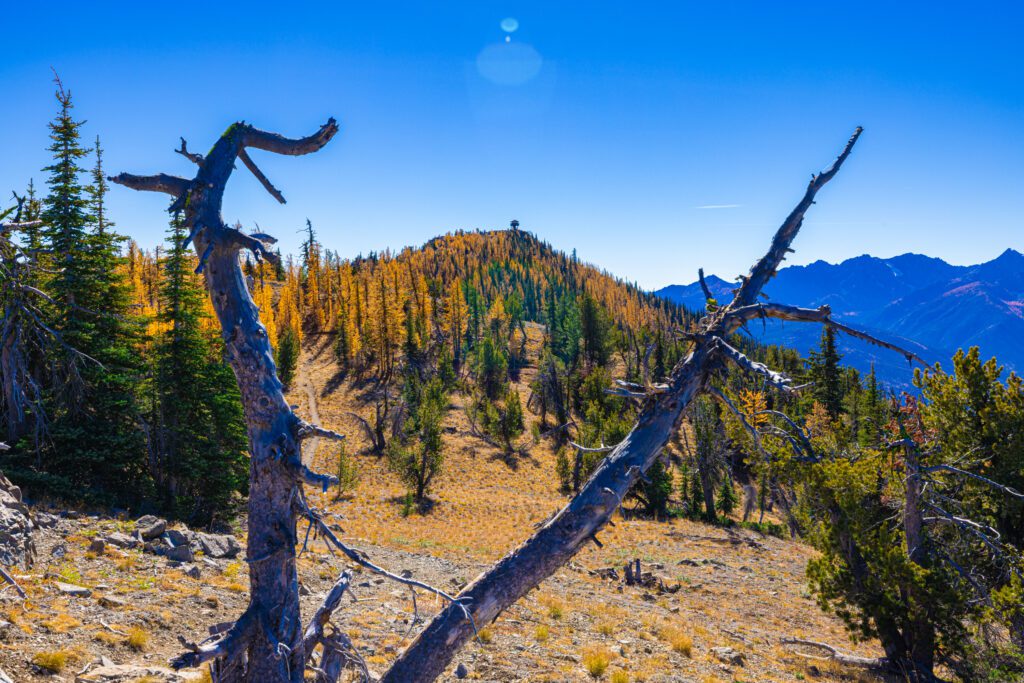
We also saw metallic gold Western larches from the highway at lower elevations.
Larches are a rare conifer that loses needles in winter. They are part of the colorful parade of fall flora like big leaf and vine maples, crimson berry bushes, sublime lemon-yellow birch, aspens, ash and cottonwoods.
Most conifers are evergreens, giving Washington its nickname.
But larches are too sensitive to cold temperatures to conduct year-round photosynthesis like their conifer cousins. They shut down the sugar-making business of carrying water and nutrients to leaves to conserve resources.
The winter retreat makes larches more fire-resistant than their fellow trees, the U.S. Forest Service reports. The annual shedding of leaves keeps the needles from becoming highly flammable.
Larches, which can live for 1,000 years, aren’t particularly tall or thick.
The largest and tallest known Alpine species are found at the appropriately named Larch Lakes near Entiat in the eastern Cascades, according to conifer expert Chris Earle of Olympia.
Earle — a friend of mine — found the largest specimen in 1993 and verified it 11 years later with renowned big tree expert Robert Van Pelt of Seattle. It is a 104-footer with a 7-foot diameter.
The University of Washington forest ecologists also found the tallest tree nearby. That one is 126 feet tall.
Western larches are the biggest of a genus with about 10 species. The largest known tree is the Seeley Lake Giant in Montana’s Lolo National Forest. It is 162 feet tall with a 7.2-foot diameter.
Earle reports the tallest known Western larch is a 212-foot tree growing at Pleasant Valley Campground near Mount Rainier.
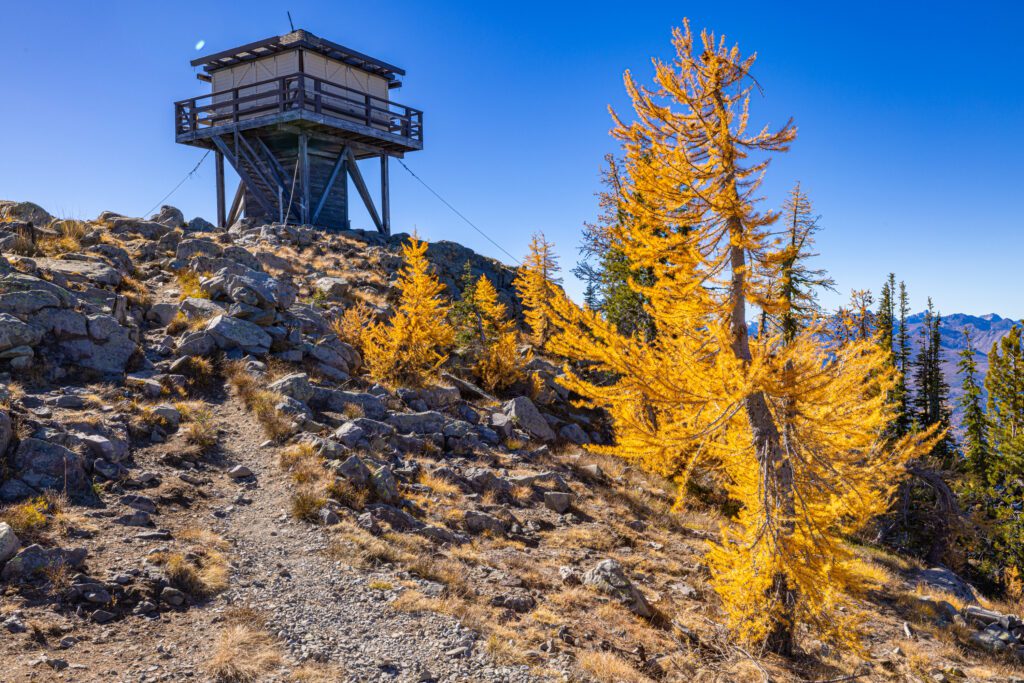
Goat Peak did not appear to offer any large specimens, not that it mattered.
I was not thinking about the scientific wonders of trees while trekking in the pine-carpeted Okanogan-Wenatchee National Forest.
The trail cut through a blaze of colorful larches as sun stars appeared in the chlorine-blue sky. Ken reckoned we missed the peak of vibrancy by at least a week.
The trees were magnificent, nonetheless. The golden tones popped against the white granite rock as we sat alone on the summit, gazing at the surrounding Cascadian peaks.
After polishing off Goat Peak, Ken has reached 13 lookouts on his list of 44 sites. The state has a total of 93 fire lookouts still standing from the 660 built since 1900, according to the Forest Fire Lookout Association.
Goat Peak, built in 1923, once served the tinder in Methow Valley as a vital lookout for lightning-caused wildfires. It had a resident celebrity in fire spotter “Lightning Bill” Austin, who spent 19 consecutive seasons atop Goat Peak.
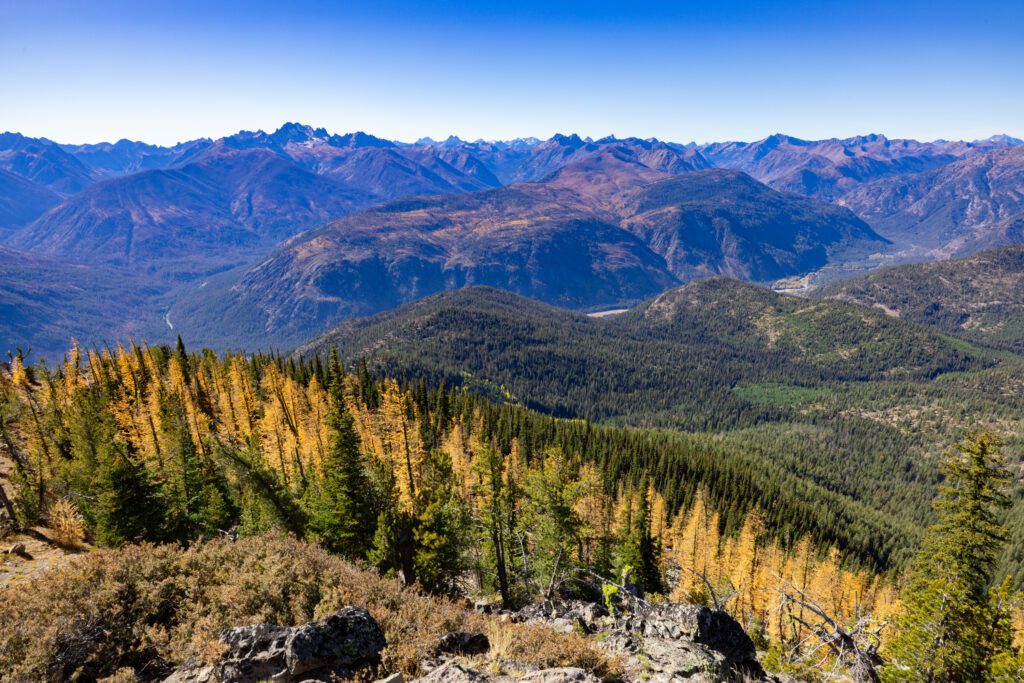
In 2015, rangers transferred Austin to the Leecher Mountain Lookout southeast of Goat Peak. He continues his work there as a seasonal spotter.
Austin, now 68, once told the Methow Valley News that he hopes to keep working well into his 70s.
Ken would like to summit Leecher Mountain next summer and perhaps meet Lightning Bill.
If I’m invited to tag along, you know the answer will be “yes.”
Elliott Almond’s outdoor column appears monthly. Email: elliottalmond4@gmail.com.

